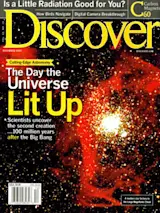A glistening yellow gem encircled by hoops of gold, Saturn is one of the sky's few genuine showstoppers. Even people who have never bothered to play connect-the-dots with the constellations inevitably gasp in wonder when they see the ringed planet through a telescope. And there is no time like the present to experience this joy: Saturn hasn't looked this good for three decades.
Three types of unusual planetary orientations coincide in December to bring Saturn to its peak. First there is the tilt of Saturn's rings, which consist of billions of chunks of water ice organized into a disk that is incredibly thin, roughly 300 feet from top to bottom. The rings open up twice to us during Saturn's 29.5-year orbit, as the planet's north pole alternately appears tipped toward us and away from us. When the rings are aimed edgewise toward Earth, which last happened in 1995, they are ...














